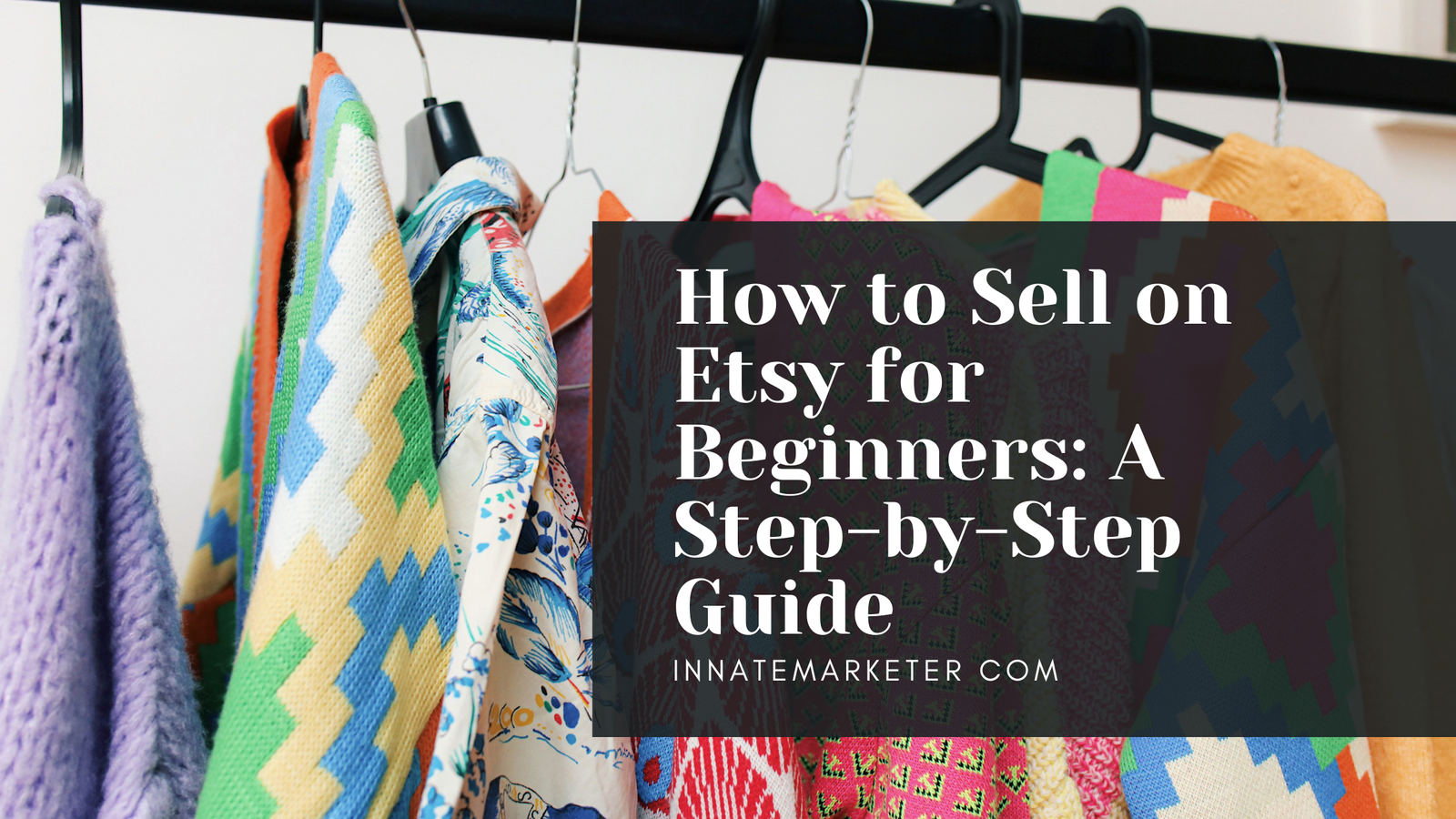Etsy is a popular online marketplace where millions of people buy and sell handmade, vintage, and unique items. If you want to start selling on Etsy but don’t know where to begin, this guide will help you set up your shop and make your first sales with simple, clear steps.
Key Takeaway:
- Create a unique Etsy account and set up your shop with a clear, memorable name.
- Research and choose a niche or product that has demand but low competition.
- Write detailed, honest product descriptions with relevant keywords for better search visibility.
- Use high-quality photos showing your product from multiple angles.
- Set competitive prices by factoring in costs, fees, and desired profit.
- Promote your shop through social media and Etsy ads to attract buyers.
- Provide excellent customer service to build good reviews and repeat customers.
- Keep learning and optimizing your listings based on performance and trends.
Step 1: Understand What You Can Sell on Etsy
Before you open your shop, it is important to know what Etsy allows you to sell. Etsy focuses mainly on handmade goods, vintage items (at least 20 years old), and craft supplies and tools. Avoid items that are mass-produced or illegal. Make sure your products fit Etsy’s guidelines. For more product ideas, you might want to explore how to make and sell t-shirts, stickers, digital products, or wood crafts on Etsy:
- How to Make and Sell T-Shirts
- How to Make and Sell Stickers
- How to Make and Sell Digital Products
- Easy Wood Crafts to Make and Sell
For a deeper look at what you can sell and how to get started, check out this Printify guide on how to sell on Etsy.
Step 2: Create an Etsy Account
To start selling, you first need an Etsy account. Here’s how to do it: Go to etsy.com, click Sign Up at the top right, enter your email address, name, and create a password. Confirm your email to activate the account. Once your account is ready, you can create your shop. You can learn more about creating an account and selling on Etsy from Shopify’s comprehensive blog post.
Step 3: Open Your Etsy Shop
Now you will set up your shop by following these steps: Click on Sell on Etsy in the menu or visit etsy.com/sell. Choose your shop language, country, and currency. Pick a shop name. Your shop name should be unique, easy to remember, and related to your products. Click Save and Continue. You can change your shop name later, but it is best to choose carefully. For a step-by-step tutorial, watch this useful video: How to Sell on Etsy – Beginner Tutorial.
Step 4: Set Up Your Shop Preferences
Etsy will ask for your preferences next: Select how you want to get paid (PayPal, direct deposit, or Etsy Payments). Choose your billing method for Etsy fees. Enter your payment information. Etsy charges fees for listing products and takes a small percentage from each sale. Understanding fees upfront helps you price your products correctly. You can read more about Etsy’s fees and payments on Etsy’s official selling page here.
Step 5: Add Your First Product Listing
Listing your products is the most important part of your shop setup. Here’s how to add a product: Click Add a listing. Upload high-quality photos of your product. Use different angles and clear lighting to attract buyers. Write a clear title that describes your product. Include keywords people might search for. Select a category that fits your item. Fill in details like description, price, quantity, and shipping options. Add tags and materials to help your product appear in search results. Preview your listing and click Publish. Good product listings increase your chances of sales. If you want tips on photography and writing strong descriptions, check out GoDaddy’s how to sell on Etsy guide.
Step 6: Price Your Products Correctly
Pricing is key to selling on Etsy. Consider the following: Cost of materials and labor, Etsy fees and transaction costs, shipping costs, market prices of similar products, and profit margin you want. Avoid pricing too low or too high. Research competitors and find a price that covers your costs and appeals to buyers. For more detailed pricing strategies, you can visit the Printify Etsy selling guide.
Step 7: Set Up Shipping Options
Shipping is vital in online sales. Etsy allows you to set shipping fees and delivery times. You can offer free shipping to attract buyers, charge based on weight, size, or destination, and use Etsy’s shipping labels to save money and print labels easily. Make sure to estimate shipping costs accurately to avoid losses. For help with shipping options and labels, visit Etsy’s official seller resources at etsy.com/sell.
Step 8: Promote Your Etsy Shop
Once your shop and listings are live, promotion helps attract buyers: Share your shop on social media like Facebook, Instagram, and Pinterest. Use Etsy Ads to appear in search results on the platform. Offer discounts or coupons to new customers. Engage with Etsy communities and forums to get advice and connect with buyers. Promotion takes time but grows your visibility and sales. Shopify has an excellent article on how to promote your Etsy shop effectively: Shopify blog on selling on Etsy.
Step 9: Manage Your Orders and Customer Service
When you get sales, manage them professionally: Ship orders on time. Provide tracking information if available. Communicate clearly with buyers. Answer questions promptly. Handle returns or complaints politely. Good customer service leads to positive reviews and repeat buyers.
Step 10: Track Your Shop Performance and Improve
Use Etsy’s built-in analytics to track views and visits, favorites and follows, sales and revenue. Analyze which products perform best and what keywords drive traffic. Use this data to improve your listings, pricing, and marketing. Etsy’s seller dashboard helps you monitor these metrics easily. For more tips, watch this Etsy seller tutorial video.
Step 11: Expand Your Product Line Over Time
Once you gain experience and sales, consider adding new product types or designs, offering custom or personalized options, or bundling products or creating gift sets. Expanding your inventory helps attract more buyers and increase income.

Step 12: Stay Updated on Etsy Policies and Trends
Etsy updates its policies and features regularly. Stay informed by reading Etsy’s seller handbook, joining Etsy seller forums, and following Etsy’s official blog. Also, keep an eye on market trends and buyer preferences to keep your shop relevant. Shopify’s blog offers insights on staying competitive: How to Sell on Etsy.
Step 13: Handle Taxes and Legal Requirements
Depending on your location, you may need to register your business, collect and remit sales taxes, and report your earnings on tax returns. Consult local regulations or a tax professional to stay compliant.
Step 14: Use Tools to Simplify Your Shop Management
Many sellers use tools to save time, such as inventory management software, social media schedulers, and accounting apps. These tools help automate routine tasks and focus on growing your shop.
Step 15: Keep Learning and Improving
Selling on Etsy is a continuous learning process. Explore courses, tutorials, and webinars to improve your skills in photography, marketing, and product development. For beginners, GoDaddy’s how-to guide is a helpful resource.

FAQs
What do I need to get started with selling products on Etsy as a beginner?
To get started selling on Etsy, you need to create an Etsy account, choose a unique shop name, prepare your products for sale, and set up a payment method to accept customer payments securely.
How can I choose a good and memorable shop name for my Etsy store?
A good shop name should be unique, easy to remember, and reflect the style or type of products you sell. It helps your brand stand out and makes it easier for customers to find your shop again.
What types of products am I allowed to sell on Etsy as a new seller?
Etsy mainly allows handmade items, vintage goods that are at least 20 years old, craft supplies, and some unique factory-manufactured products that fit Etsy’s guidelines.
How should I go about pricing my products to be competitive yet profitable on Etsy?
When pricing your products, consider your material costs, time and labor, shipping fees, Etsy listing and transaction fees, and the profit margin you want to earn.
Are there any fees involved when selling products on Etsy that I should be aware of?
Yes, Etsy charges a small listing fee for each product, a transaction fee on every sale you make, and payment processing fees depending on the payment method used.
What are some tips for writing effective and attractive product descriptions on Etsy?
Write clear and detailed descriptions, include important keywords buyers might search for, and highlight what makes your product unique or useful to encourage purchases.
How important are product photos on Etsy, and what kind of photos should I use?
Product photos are very important because they give buyers a clear view of what they’re purchasing. Use high-quality images from different angles with good lighting to make your products look appealing.
Can beginners sell digital products on Etsy, and if so, what types?
Yes, beginners can sell digital products like downloadable prints, graphic designs, sewing patterns, or templates, which are delivered electronically without shipping.
What are the best practices for handling shipping and delivery when selling on Etsy?
Decide your shipping methods, calculate accurate shipping costs, package products carefully, and communicate delivery times clearly to buyers to ensure a smooth shipping experience.
What exactly is Etsy SEO, and why should I focus on it to improve my sales?
Etsy SEO involves optimizing your product titles, tags, and descriptions with relevant keywords so your listings appear higher in Etsy search results, increasing visibility and potential sales.
How can I effectively promote my Etsy shop to attract more customers?
Promote your shop using social media platforms, Etsy’s advertising options, email newsletters, and by collaborating with influencers or bloggers to reach a wider audience.
Is it possible to offer discounts, sales, or special promotions on Etsy to boost sales?
Yes, Etsy allows you to create discount codes, run sales events, and offer free shipping promotions to encourage buyers and increase sales.
What are some tips for providing excellent customer service on Etsy?
Respond quickly and politely to customer inquiries, address any issues or complaints professionally, and ship orders on time to maintain good reviews and repeat business.
How should I handle negative reviews or unhappy customers on Etsy?
Stay calm and professional, try to resolve the issue by communicating privately with the buyer, and use the feedback constructively to improve your products or service.
How can I track and analyze my Etsy shop’s performance to grow my business?
Use Etsy’s Shop Manager tools to monitor your views, sales, conversion rates, and traffic sources so you can understand what works and make informed improvements.
Final Thoughts
Selling on Etsy can be rewarding if you follow these steps carefully. Start small, focus on quality, and build your brand gradually. With patience and effort, your Etsy shop can grow into a successful business. For a detailed start-to-finish guide, visit Etsy’s own Sell on Etsy page.





